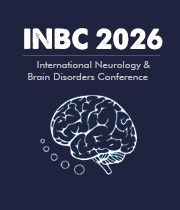Neural Structures
Neural structures are the building blocks of the human nervous system, and are fundamental to understanding how neurology studies are conducted. The nervous system is divided into three parts: central, peripheral, and autonomic. Each of these has its own distinct structures and functions. The central nervous system is composed of the brain and spinal cord. The brain contains both white and grey matter, which provide complex connections between the body and the environment. The spinal cord is responsible for relaying information from the brain to the rest of the body. The brain, spinal cord, and associated neural structures are the focus of much neurology research. The peripheral nervous system is composed of many different nerves. These nerves carry signals from the central nervous system to the organs and limbs, and from the limbs back to the brain. This system is responsible for motor activities, sensation, and . Neurologists often study changes in the peripheral nervous system and its effects on behavior, emotion, and cognition. The autonomic nervous system regulates the body’s involuntary, or unconscious, processes, such as breathing and digestion. This system is composed of the sympathetic and parasympathetic nervous systems, and is also affected by psychological stimuli. Areas of research related to autonomic structures include the control of stress hormones and the development of treatments for anxiety and depression. Research of neural structures is important to understanding neurological disorders, such as Alzheimer’s disease, Parkinson’s disease, stroke, and multiple sclerosis. Neuroimaging, such as functional magnetic resonance imaging (fMRI), is used to assess specific areas of the brain to better understand how it works and how it may be affected by certain medical conditions. Studying neural structures and their functions can help us understand how these conditions may develop and progress, and thus lead to effective treatment.

Joe Sam Robinson
Mercer University, United States
Robert B Slocum
University of Kentucky HealthCare, United States
George Diaz
Memorial Healthcare Systems, United States
Daniel Curry
Texas Children’s Hospital, United States
Zhenhuan Liu
Guangzhou University Chinese Medicine, China
Kiran Ghotra
Lake Erie College of Osteopathic Medicine, United States




Title : Atypical presentation of Juvenile myoclonic epilepsy in a 16-year-old female: A Case Report
George Diaz, Memorial Healthcare Systems, United States
Title : What we don’t know about hydrocephalus and It’s management
Daniel Curry, Texas Children’s Hospital, United States
Title : Artificial intelligence-driven DWI and FLAIR for the detection of early stroke changes: A systematic review
Shari L Guerra, The Medical City, Philippines
Title : Mapping neuroplasticity in occupational therapy: Evidence-based interventions with measurable neural outcomes
Jessica Marchant, Texas Woman's University, United States
Title : Non-pharmacologic management of orthostatic hypotension in inpatient rehabilitation: A quality improvement initiative
Laura Steakin, Rehabilitation Institute at Sinai, United States
Title : Non-pharmacologic management of orthostatic hypotension in inpatient rehabilitation: A quality improvement initiative
Mackenzie Weber, Rehabilitation Institute at Sinai, United States